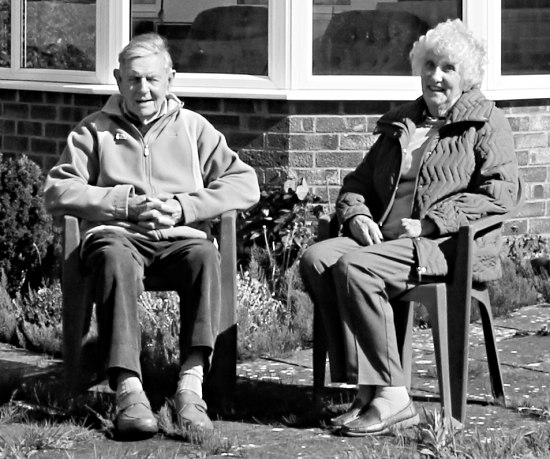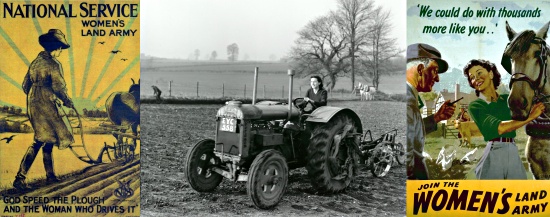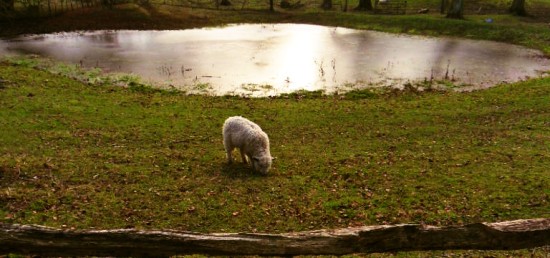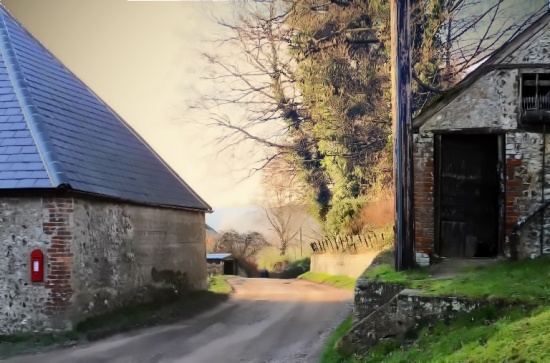
Tours of the 17th century Threshing Barn, Tudor Scullery and Donkey Wheel. You can also venture further afield for tours on surrounding Newtimber Hill. Refreshments at the new Wild Flour cafe. Children and dogs welcome. Parking £2 — follow signposts near Devil’s Dyke on the day. Sunday 10th September 2017, 10:30am–3:30pm, free admission.
Category Archives: Local History
Wealden Building Study Group
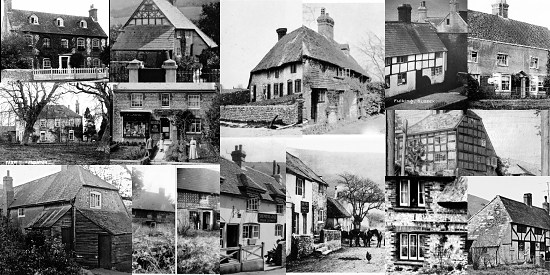
The Wealden Building Study Group might be interested in visiting your old house or barn. You could learn a lot about the history and construction of the building. They have a waiting list, and are currently formulating their April to October 2018 visits programme. Click the image to download their flyer.
Military History Weekend
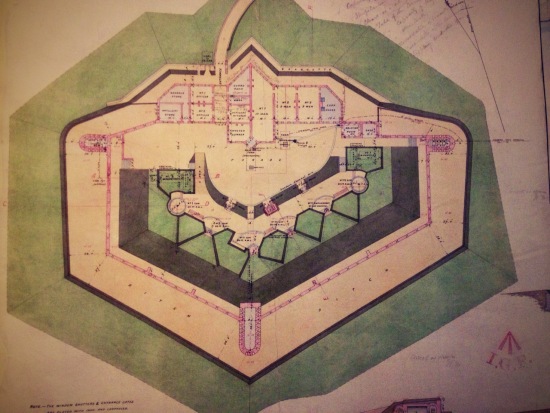
Shoreham Fort, Forthaven, Shoreham-by-Sea, BN43 5HY, Saturday 3rd & Sunday 4th June, 11:00am–4:30pm. A family friendly event with cannon firing, military parade ground demonstrations, living history and military vehicles on display. Refreshments, BBQ, cake and food will be available on site.
Bobservation No. 32: Farewell to Tony and Doris
Tony and Doris Brooks came to Fulking to live at Hillbrook in 1970 and built the existing bungalow themselves in 1975.They then successfully ran Hillbrook Nursery until 1998 when they retired.
In the 47 years they lived in Fulking they have been stalwarts of all village activity and will be much missed. Tony has been a councillor and chairman of the parish council as well as one of the driving forces of the Social Committee. His authorship of the two volumes of The Changing Times of Fulking and Edburton which he published in 2007 & 2015 is an historical gem so far as the village is concerned and remains the important source of village information. Incidentally the proceeds of the sale of this work were, most generously, donated to the St Andrews church restoration fund.
Personally, I have been fortunate to come into contact with Tony over village matters many times and his honest and direct approach has been a great asset. I regret to say that their departure virtually brings to the end the era of a particularly dedicated type of villager, many of the recent arrivals to the village do not seem to me to be as interested or committed to Fulking.
Please join me in wishing Tony and Doris much happiness in their new home in Hassocks. We shall miss them.
The Women’s Land Army — A Sussex Connection
The rescheduled talk by Ian Everest to Henfield History Group at 8:00pm on Tuesday 9th May 2017 in the Free Church Hall, Coopers Way, Henfield. The talk covers the role of women on Sussex farms and their vital contribution to feeding the country during both WWI and WWII. Their efforts only gained official recognition many years after they were disbanded in 1950. The speaker’s mother was one of 80,000 Land Girls during WWII and the talk will include some of her personal memories as a ‘Cinderella of the Soil’.
[GJMG notes: I have attended two different talks by this speaker in recent years. They are among the best local history talks I have heard.]
Saddlescombe Farm Open Day
Tours of the 17th century buildings, the surrounding downs and the walled garden. Displays and demonstrations of traditional work including hurdle making, shepherding, carpenters’ workshop and more. Watch out for newly born lambs and the sheep dog Belle. Tea and home-made cakes available.
Sunday 23rd April, 10:30am–4:00pm, adult £5, child £2, family £13.
Fulking Village Scrapbook
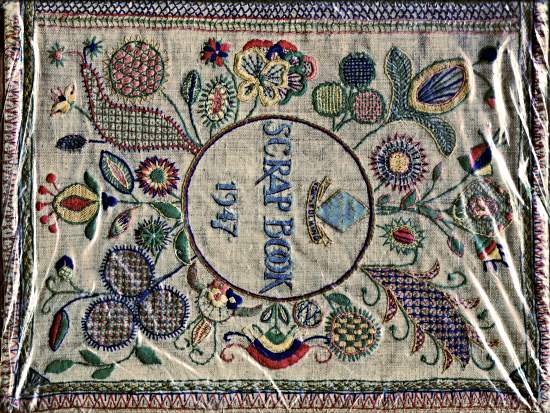
The whereabouts of the scrapbook is currently unknown to those whose task it is to keep it. If you have it, please contact Linda or Terry Harris at 486 as soon as possible.
Thirty year anniversary: A Walk .. restored
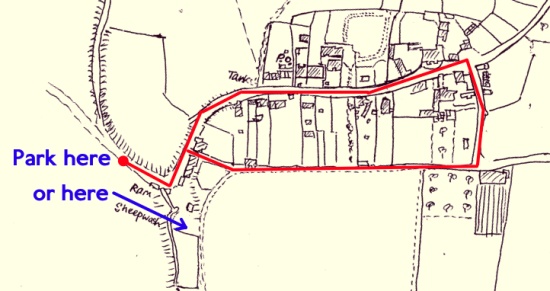
Villagers who arrived in Fulking too late to visit the shop can now help themselves to a free PDF copy of Stuart Milner’s sixteen page pamphlet A Walk Down The Village Street In Fulking thirty years after it originally went on sale there. If you ever have house guests that you don’t know what to do with, then cramming a paper copy into their hands should keep them out of your kitchen for at least an hour. The corresponding web page has also been rejuvenated and now has links to other relevant historical material on the website. Click on the map above for all the details.
[Thanks to Gill Milner, Clive Goodridge and Tony Brooks for their help with this restoration project.]
Two new local history posts
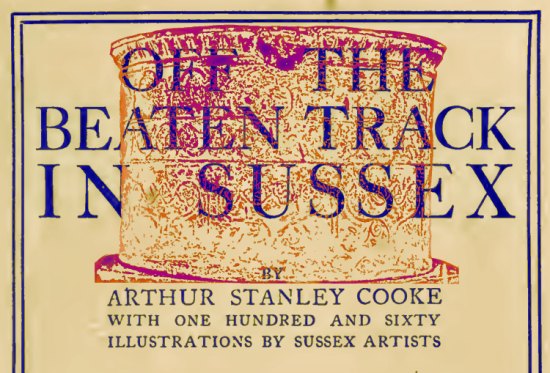
Lead fonts are extremely rare — there were just thirty left in England in 1909. The churches at Edburton and Pyecombe each have one, probably created in the Norman era by the same craftsman. Lewis André and Lawrence Weaver will tell you what is known about them.
Arthur Stanley Cooke also enthuses about the font at St. Andrew’s in the course of his erudite report of a circular walk that he took in the very early years of the twentieth century, starting at the Dyke Station and taking in Poynings, Fulking and Edburton. Fulking did not detain him long but his enthusiasm for Edburton is obvious.
Off the beaten track
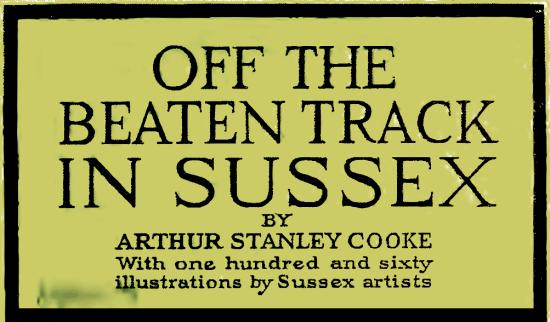
Off the Beaten Track in Sussex appears to have been the only book that Arthur Stanley Cooke ever wrote. There were two editions, one published in 1911 by A.S. Combridges of Hove and another in 1923 by Herbert Jenkins of London. The latter, at least, must have sold well because numerous copies can be found in stock at used book dealers to this day. A contemporary reviewer commented that “No detailed criticism is called for. The author knows and loves the county well, and knows how to put his impressions into words. .. [He] has clearly had a good opportunity of writing an interesting book, and he has not neglected it.” [The Spectator December 30, 1911, page 25]. A feature of the book is the large number (160) of illustrations, mostly pen and ink, by a variety of Sussex artists including the author himself. Cooke writes as a well-educated Edwardian gentleman whose interests are archaeology, architecture, onomastics, history and landscape. In the extract that follows, the author leaves Poynings, gives Fulking a somewhat cursory inspection, and ends with a meditation upon the merits of Edburton. Apart from this passage, there is much else in the book to interest the local resident including material on Beeding, Bramber, Botolphs, Buncton, Chanctonbury, Coombes, Lancing, Shoreham, Sompting, and Steyning, inter alia. [Thanks to Gill Milner for drawing this book to the local history editor’s attention.]
Poynings has few interesting old houses. The old Post Office is perhaps the best of them, and its interest is rather of the eighteenth century than of an earlier date; of the day when houses were built and appointed in a homely rather than an artistic or appropriate fashion. I use the word in its humble sense. Rooms were low pitched, small and not too pretty. Ornamental details were rigorously excluded, and most things done something after the style of a doll’s house, rather than for the daily use of “grown-ups.” Witness the tiny shop window and even this is altered since the sketch was made.
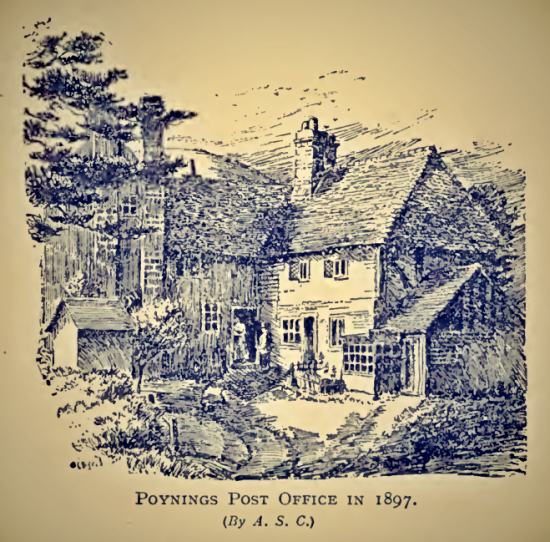
You leave Poynings by the western road, and at the entrance of Fulking there is a half-timbered house, which makes a good sketch, with the downs for background. Clappers Lane, known to but few, winds a green way north of this house for several miles, and where the stream crosses the path there is a spot which would be difficult to get a sketcher by without a rope or some equally persuasive argument!
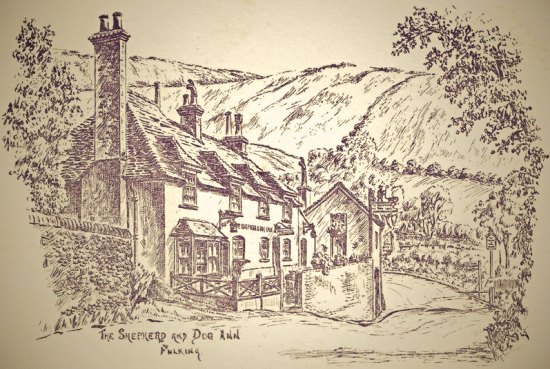
The Shepherd and Dog Inn stands at the western end of the hamlet, by one of the sharpest turns that Sussex roads, noted for sudden crinks, can show. It is a picturesque spot, for at the bend the stream which comes from under the hill not a hundred yards away, gushes into the ditch, close by a quaint little pump-house erected to the memory of John Ruskin. Here is the sheep wash, and when that is in progress, there is subject enough for any artist.
Edburton, the parish church for Fulking, lies still farther on. It will probably be somewhat of a surprise to those who happen to know how near it is to Poynings, and have not thought it worth a visit. The latter church lies so directly under the eyes below the Dyke, that the more retiring and older building is seldom seen. Edburton Church stands embosomed in trees about a mile west of Fulking, and although it cannot be said to vie with Poynings in originality and beauty, still it is by no means to be despised therefor.

It is large and full of interest for the antiquarian. The restoration, with scarcely an exception, has been lovingly carried out. The simple seating has distinct merit, both as to design and mouldings, and anything which had age to recommend it has been retained, and wisely, too. It is a well-known fact that everything made prior to the beginning of the reign of shoddy and veneer was, in the main, well proportioned and artistic in design and ornament. That is why it is nearly always safe to copy old models.
Edburton possesses one of the only three cast-lead fonts in our county, and perhaps the oldest of them. It is late Norman, and has panels of floriated design at the base, with a similar encircling pattern above, surmounted by an arcade of tref oiled arches. There are only twenty-nine of these fonts in all England, and therefore they are of great interest. Simple in form of course they are, and usually stand on a stone or wooden base. The lead is about an inch thick, and shows signs of the pattern being a repetition of the same segment of wooden mould impressed in the sand or clay that received the molten metal. The one at Pyecombe is somewhat similar, but more ornate; and that at Parham is a unique specimen of the Decorated period, being ornamented with shields and bands of inscriptions in beautiful Lombardic capitals.
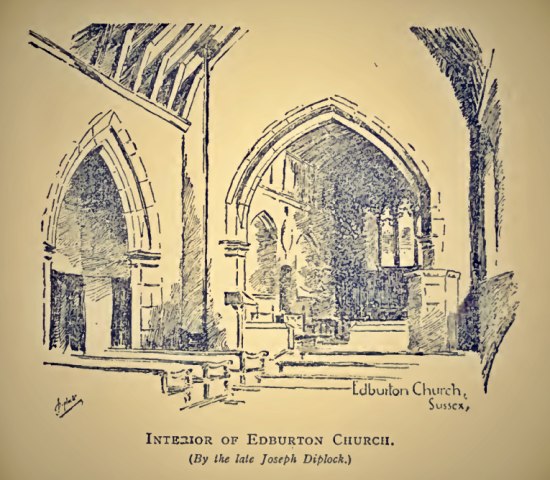
One of the bells is amongst the oldest in Sussex, and bears two shields and an octagonal medallion. One of the shields has the crossed keys and a dolphin, a laver, a wheatsheaf, and a bell in the fourquarters.
The history of Edburton, Adburton, or Abberton as it is differently styled in old records is of the quiet kind, suited to its situation. Once only does the tide of spiritual war seem to have reached it, when Michael Jermyn, the Rector, would not “conform” in 1655, and was ejected after thirty years’ ministry, Nicholas Shepheard being installed in his place by the Lord Protector, Oliver Cromwell.
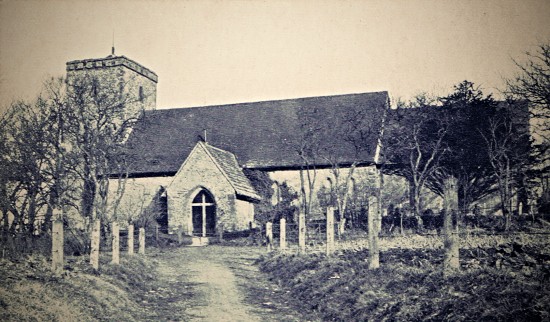
Edburton is connected with the Metropolitan of England, the advowson belonging to Canterbury. There are traces of no less than three altars, one of which was founded in the north transept by William de Northo in 1319, in honour of St. Katherine.
This modest list exhausts the historical interest, and apart from an antiquarian excitement which fluttered for a brief space over some Roman remains, chiefly notable for their scantiness, Edburton may be compared with the violet in its retiring nature. Like that simple floweret, it must be sought to be found, if one may descend to a truism so evident, yet justifiable. The charms of scenery are not always realised at a glance. Where these are so instantly in evidence, there is usually little more to discover; and where only an occasional visit is made, it is enough for the time being the eye is satisfied and asks for no more just then. But if it is often dwelt upon, one gets to wonder whether it is quite so fair as it seemed at first and then the less striking locality has its day of quiet examination, and begins to improve on acquaintance. Sunrise, sunset, and the different moods of weather help to make a beautiful panorama worth seeing; but it is only one view, and tires the eye after awhile; whereas the quieter beauties of winding road or stream, of hedgerow or copse-corner, will bring the artist up with “a round turn” where least expected.
So it is with the scenery in and about Edburton. There is nothing of the startling order to attract one, but there are lots of subjects to linger over; bits of colour, groups of trees, and fine hills both near and far. A little north-east of where my first view is taken, the village makes a foreground group of roofs not to be despised in colour or in line, and beyond it the grey old church with ruddy tiles fills the right of the picture to entire satisfaction; while the cornfield fronting all ripples in wavelets of yellowing green in August, to a delightful belt of trees at the foot of the nearest hill; and far-away Chanctonbury hangs like a grey cloud to the summit of its Down.
This is the view you will see as you cross the upland field to the steep ascent. By the time you reach the top you will have had enough of climbing and be glad to rest on the grass and take in fresh breath and the wider wealden view, before catching the train at the Dyke Station.
Arthur Stanley Cooke (1923) Off the Beaten Track in Sussex, London: Herbert Jenkins, pages 57-61.
[The text is reproduced exactly as it originally appeared with the exception of the spelling of certain place names. In deference to Google, all the place names appear with their current spellings.]

Currently popular local history posts:

